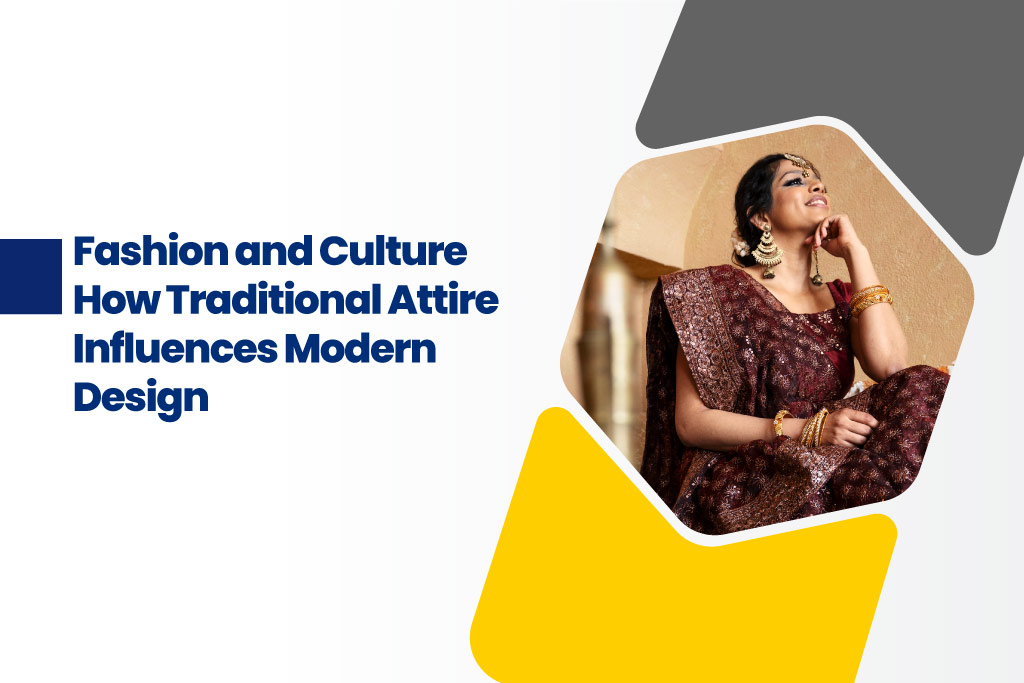Introduction
Fashion is a dynamic field that constantly evolves, yet it often draws inspiration from cultural heritage. Traditional attire, with its rich history and cultural significance, plays a vital role in shaping modern fashion design. This blog explores how traditional clothing influences contemporary fashion, highlighting key elements, techniques, and the importance of cultural representation. As a student or aspiring designer at one of the B Des Fashion Design Colleges in Coimbatore, understanding these influences is crucial for creating innovative and culturally resonant designs.
Historical Perspective
Throughout history, traditional attire has significantly influenced fashion. From the intricate embroidery of Indian sarees to the bold patterns of African textiles, traditional garments reflect the cultural identity and craftsmanship of their origins. These elements have been adapted and reimagined in modern fashion, blending the old with the new to create unique styles. For example, the kimono’s influence can be seen in contemporary wrap dresses and oversized silhouettes, while traditional embroidery techniques from Eastern Europe have been incorporated into high-fashion collections.
Modern Fashion Design Influences
Key Elements of Traditional Attire in Contemporary Fashion
Modern designers often incorporate elements of traditional attire into their collections. This includes patterns, colors, and motifs that are characteristic of specific cultures. The use of vibrant African prints, the elegance of Chinese silk, and the bold embroidery of Mexican textiles are just a few examples. These elements add depth and authenticity to modern designs, making them stand out in a global market.
Designers and Brands Drawing Inspiration from Traditional Attire
Many renowned designers and fashion brands draw inspiration from traditional attire. For instance, John Galliano’s collections for Dior often featured elements inspired by traditional Japanese and Chinese clothing. Similarly, Indian designer Sabyasachi Mukherjee is known for his contemporary interpretations of traditional Indian attire, blending classic fabrics with modern silhouettes.
Case Studies of Traditional Influences in Modern Collections
A notable example is Valentino’s 2016 collection, which drew inspiration from African art and traditional attire. The collection featured bold prints, intricate beadwork, and vibrant colors, showcasing how traditional elements can be reimagined in high fashion. Another example is the use of traditional Indian textiles and motifs in contemporary bridal wear, which combines cultural heritage with modern design aesthetics.
Techniques and Materials
Traditional Techniques Used in Modern Fashion
Traditional techniques such as hand embroidery, block printing, and weaving are often used in modern fashion to create unique and intricate designs. These techniques, passed down through generations, add a layer of craftsmanship and authenticity to contemporary pieces.
Incorporation of Traditional Fabrics and Patterns
Designers also incorporate traditional fabrics like silk, wool, and cotton, along with traditional patterns such as paisley, ikat, and tartan. These materials and patterns are often reinterpreted in new ways, creating innovative designs that honor their origins while appealing to modern sensibilities.
Fusion of Old and New in Fashion Design
The fusion of traditional and modern elements results in fashion that is both timeless and contemporary. This blend can be seen in various aspects of design, from silhouettes to embellishments, creating pieces that resonate with a wide audience while maintaining cultural significance.
Cultural Significance and Representation
Importance of Cultural Representation in Fashion
Cultural representation in fashion is vital for promoting diversity and inclusion. By incorporating traditional elements, designers can celebrate and honor different cultures, fostering a greater understanding and appreciation of global heritage.
Ethical Considerations and Cultural Appreciation vs. Appropriation
While drawing inspiration from traditional attire, it is essential to differentiate between cultural appreciation and appropriation. Ethical considerations include respecting the origins of the designs and giving credit to the cultures that inspire them. Collaborating with artisans and communities can also ensure that traditional crafts are preserved and valued.
Role of Fashion Education in Promoting Cultural Awareness
Fashion education plays a crucial role in promoting cultural awareness and appreciation. Institutions like the Best Fashion Designing Colleges in Coimbatore emphasize the importance of understanding cultural heritage in fashion design. Courses that explore traditional attire and techniques help students create designs that are both innovative and respectful of their cultural influences.
Fashion Education and Traditional Attire
Integrating Traditional Influences in Fashion Curriculum
Integrating traditional influences into the fashion curriculum helps students appreciate the richness of cultural heritage. This education equips future designers with the knowledge and skills to incorporate traditional elements into their work thoughtfully and creatively.
B Des Fashion Design Colleges in Coimbatore
Among the B Des Fashion Design Colleges in Coimbatore, Karpagam Architecture stands out for its comprehensive approach to fashion education. The curriculum includes a deep dive into traditional attire and its modern applications, preparing students to create culturally resonant designs.
Best Fashion Designing Colleges in Coimbatore
Karpagam Architecture is also recognized among the Best Fashion Designing Colleges in Coimbatore, offering state-of-the-art facilities and a faculty of experienced professionals. Students are encouraged to explore traditional designs and innovate within their projects.
Top 10 Fashion Designing Colleges in Coimbatore
As one of the Top 10 Fashion Designing Colleges in Coimbatore, Karpagam Architecture provides students with opportunities to engage with traditional artisans, participate in cultural studies, and create designs that reflect a global perspective.
Future Trends
Predictions for the Continued Influence of Traditional Attire
The influence of traditional attire on modern fashion is expected to grow, with designers increasingly valuing sustainability, craftsmanship, and cultural heritage. Future trends may see a greater emphasis on ethical fashion and collaborations with traditional artisans.
Emerging Trends in the Fusion of Traditional and Modern Fashion
Emerging trends include the use of technology to enhance traditional techniques, such as digital embroidery and 3D printing with traditional patterns. These innovations will continue to push the boundaries of fashion design.
Potential Impact on Global Fashion Markets
The fusion of traditional and modern fashion can significantly impact global markets, promoting cultural exchange and diversity. As consumers become more conscious of cultural representation and sustainability, traditional influences will likely become even more prominent.
Conclusion
Traditional attire significantly shapes modern fashion design, offering a wealth of inspiration and innovation. By understanding and incorporating these influences, designers can create unique, culturally resonant pieces that honor their heritage. At Karpagam Architecture, one of the B Des Fashion Design Colleges in Coimbatore, students are encouraged to explore these traditional elements and integrate them into their modern designs. Embrace the rich cultural heritage in fashion and contribute to a diverse and innovative fashion industry.





